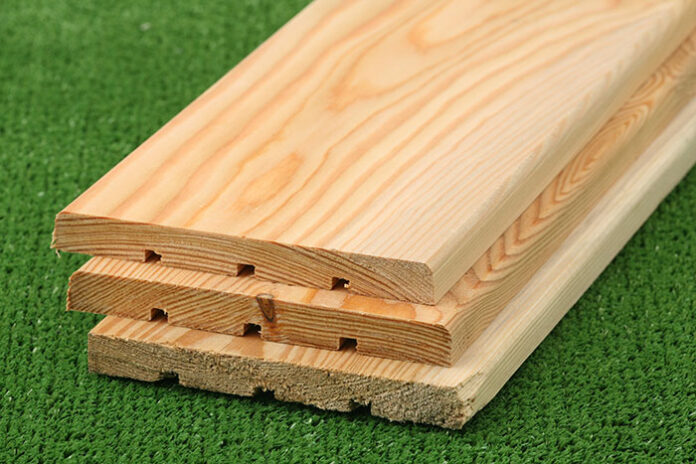Scientists have fabricated artificial wood from synthetic resins which while mimicking natural wood exhibits improved properties for multifunctional use
Wood is an organic fibrous tissue found in trees, bushes and shrubs. Wood can be called as the most useful and maybe the most versatile material on planet Earth. It has been used for thousands of years for multiple purposes and is highly remarked for its low density and high strength. The unique anisotropic cellular structure (i.e. different properties in different directions) of wood grants it amazing mechanical properties as well making it strong, stiff but still light and flexible. Wood has high compressive strength and low tensile strength. Wood is environment and cost friendly, super strong, durable and long-lasting and can be used for building just anything from making paper to building houses.
Nature has already provided us with amazing materials like wood. Yet there is always an inspiration revolving around nature for us to design and develop high-performance biomimetic engineering materials, ones which could ‘mimic’ the amazing properties of biomaterials already found in nature. The uniqueness of wood comes from its anisotropic cellular structure along with low density and high strength. In the recent past scientists have tried to design materials considering this concept in a bid to duplicate properties of wood like high-strength and lightweightness. However, most of the research has led to unsatisfactory results as the materials designed suffered from one flaw or the other. It still remains a substantial challenge for engineers to construct artificial wood-like materials. This is of high relevance because it takes decades to grow natural wood and time and efficiency are a strong criterion when looking to make a material similar to natural wood.
Bioinspired wood
Researchers from University of Science and Technology of China have devised a novel strategy for fabrication of bioinspired artificial polymeric wood on a large scale. This artificial material has wood-like cellular microstructure, good controllability in microstructures and would demonstrate properties like lightweightness and high strength analogous to the mechanical properties of natural wood. Researchers state that this new material is as strong as natural wood unlike any other engineered woods researched till date.
Wood found in nature contains a natural polymer called lignin which is responsible for making the wood strong. Lignin binds small crystallites of cellulose together in a mesh-like structure to create high strength. Researchers thought of replicating lignin by using a synthetic polymer called resol which has similar properties. They successfully converted traditionally available resols (phenolic resin and melamine resin) into artificial wood like material. The conversion was achieved by first utilizing self-assembly properties of the polymer resol and then by undergoing themocuring. For achieving self-assembly, liquid thermostat resins were unidirectionally frozen, then cured (cross-linked or polymerized) at temperatures no more than 200 degrees Celsius. The engineered wood produced adopts a cell-like structure closely resembling that of natural wood. Subsequently, thermocuring – a process consisting of temperature-induced chemical change (here, polymerization) in resol – was performed to produce artificial polymeric woods. The pore size and wall thickness of such a material can be manually controlled. Not just that, the crystallites which resol makes can also be changed based upon the requirement of the type of wood. The colour could also be altered by adding or switching the crystallites which hold resol together. When this engineered wood is compressed, it exhibits resistance similar to its natural counterpart. The approach described in the study can also be termed as a green approach to prepare artificial woods wherein compost of nanomaterials like cellulose nanofibers and graphene oxide can be used.
Interestingly, engineered artificial wood displays better corrosion resistance to water and acid compared to natural wood while assuming no decline in its mechanical properties. This means that artificial wood can resist extreme weather events and would be improved at providing protection. It also shows better thermal insulation and improved resistance to fire and would not catch fire easily like natural wood does mainly because resol is fire retardant. This can be a boon for sectors like manufacturing and construction especially residential buildings which catch fire when built using natural wood. The material is ideally suited for tough and harsh environments as it is quite enhanced when compared to natural wood. It is unique when compared to standard engineering materials like cellular ceramics and aerogels with respect to strength and thermal insulation properties. It is also more effective than most plastic-wood composites due to its higher strength. The engineered wood has quite a galore of properties which make it more efficient.
The novel strategy described in this study published in Science Advances provides new avenues to fabricate and engineer variety of high-performance biomimetic engineering composite materials which will have some significant advantage over their traditional counterparts. Such novel materials can have broad applications in many fields.
***
{You may read the original research paper by clicking the DOI link given below in the list of cited source(s)}
Source(s)
Zhi-Long Y at al. 2018 Bioinspired polymeric woods. Science Advances. 4(8).
https://doi.org/10.1126/sciadv.aat7223
***




































